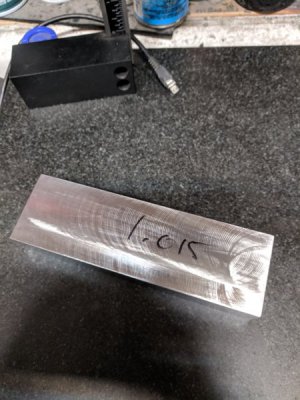H
Hukshawn
Forum Guest
Register Today
That I know.Fast surface speed is relative to the diameter of the tool.
That I know.Fast surface speed is relative to the diameter of the tool.
So would 4140 be considered a medium carbon or a tool steel?
The manufacturer of the inserts will likely have printed a guide to speeds and feeds on the package, start there and work up or down as required, I have never seen a multi insert facemill running at recommended speeds that did not spark a good deal in steels when used dry as intended.Can you give me the best speed references you guys have? Anything online? A picture of a print out?

